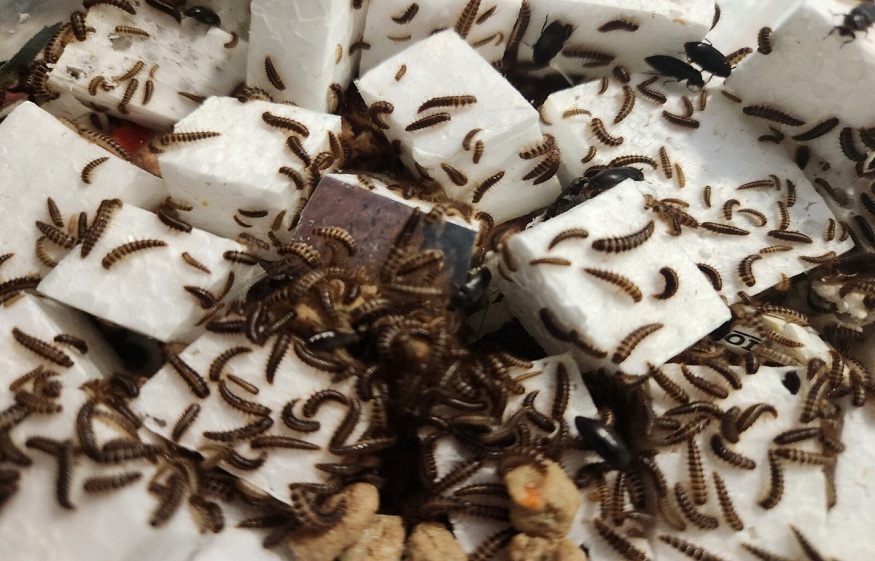In the often-unseen corners of natural history museums, universities, and professional taxidermy studios, a tiny, industrious organism is responsible for one of the most critical and delicate tasks in specimen preparation: the Dermestid Beetles for Sale – Flesh Eating Beetles for Taxidermy. Commonly known as flesh-eating beetles, these insects and their larvae belong to the family Dermestidae. Their seemingly gruesome moniker belies their essential and surprisingly gentle role as nature’s ultimate recyclers. For professionals tasked with cleaning bones—a process known as defleshing or maceration—dermestid beetles offer a biological solution that is faster, cleaner, and ultimately superior to traditional chemical or boiling methods, effectively revolutionizing the preparation of osteological specimens and trophy mounts.
The traditional methods for cleaning bones, such as boiling or using strong chemical solvents like bleach, are often crude and damaging. Boiling can cause the bone to become greasy, brittle, and cracked due to the high heat and the embedding of fats deep within the bone structure. Chemicals, while effective at removing tissue, can weaken the bone matrix, cause discoloration, and are hazardous to handle. Dermestid beetles provide an organic, non-invasive alternative that produces museum-quality results. Their meticulous eating habits allow them to consume every speck of soft tissue, leaving the delicate bone structure pristine, intact, and perfectly preserved for study or display.
The Biology of the Clean Team
The true workhorses of the dermestid colony are the larvae. These small, hairy, reddish-brown creatures are voracious eaters, consuming organic material at an astonishing rate. The most commonly used species in professional colonies is Dermestes maculatus, or the hide beetle, known for its efficiency and relatively easy management. The adult beetles lay tiny white eggs near a food source. Once hatched, the larvae molt several times as they grow, and their appetite increases exponentially with each stage.
The magic of the dermestid cleaning process lies in their ability to consume only the soft tissue—muscle, tendons, fat, and cartilage—while completely ignoring the bone itself. They meticulously clean around the most intricate skeletal structures, such as the tiny bones of the nasal cavity or the delicate sutures of the skull, which would be impossible to clean manually without causing damage. They can clean a complete large skull, such as that of a deer or bear, down to bare bone in a matter of days or weeks, depending on the size of the specimen and the colony. This speed and precision make them invaluable assets to preparators.
Establishing and Maintaining a Healthy Colony
Running a successful dermestid cleaning operation is more about pest management and biology than simply throwing a carcass into a box. The environment of the colony must be precisely controlled to ensure the beetles remain healthy, active, and focused on their job.
The colony is typically housed in a secure, well-ventilated container—often a large plastic tub or tank—that prevents escape. Escape is a major concern, as an unleashed colony of dermestids can quickly become a serious pest, infesting other taxidermy work or even structures within a building. The container is often lined with a bedding material like shredded paper or wood shavings, which provides the larvae a safe place to hide and pupate. Temperature and humidity are the most critical factors. The ideal temperature range is warm, typically between 75∘F and 80∘F (24∘C and 27∘C), which encourages rapid feeding and reproduction. If the temperature drops too low, the beetles become sluggish and stop eating.
Specimens introduced to the colony must be largely defrosted and dry to prevent excessive moisture, which can lead to mold and bacterial growth—conditions that are harmful to the beetles. The proper management of the colony’s diet is also essential; they must have a continuous supply of material to clean, but overfeeding can lead to overwhelming infestations of mites, another common pest in the entomological world.
Superior Results for Education and Taxidermy
The primary advantage of dermestid cleaning is the superior quality of the final bone preparation. The beetles leave the bone structure entirely intact, making them the preferred method for preparing specimens used in museum exhibits and scientific research. Unlike boiling, which can destroy subtle features and connective tissues, the beetles preserve the integrity of fragile osteological features. This allows researchers to study skeletal anomalies, suture lines, and tiny bone structures with unprecedented clarity.
In the realm of trophy taxidermy, the resulting “bone white” skull mounts are highly prized for their clean, natural appearance. The consistency and thoroughness of the cleaning process simply cannot be matched by manual tools or corrosive chemicals. The dermestid beetle, though small and seemingly repulsive, is therefore recognized by professionals as the gold standard, providing a biological solution that is efficient, ecologically friendly, and artistically precise. Their silent, tireless work ensures that the skeletal remains of the natural world are preserved with the dignity and detail they deserve.

